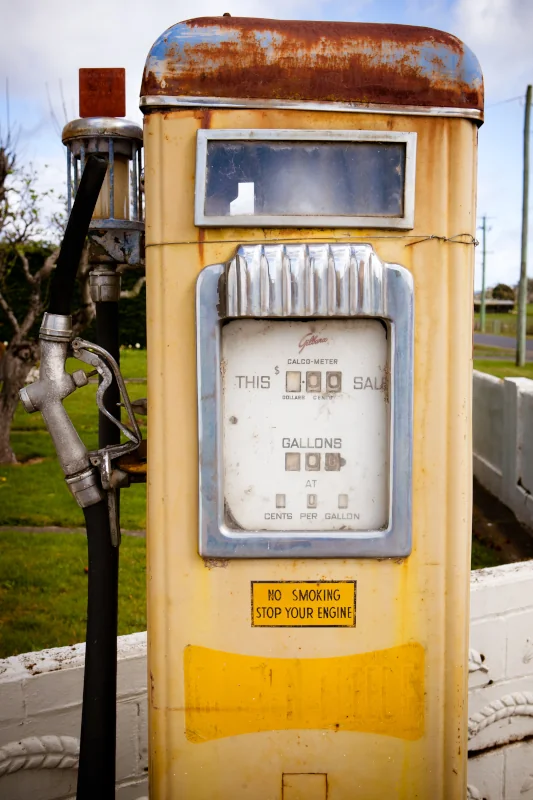What percentage of the GST and expenses am I entitled to claim on my vehicle?
As an accountant, I often receive questions regarding how much GST and vehicle expenses can be claimed for business purposes. One recent query came from Lilly, a full-time cereal farmer, who wanted to know how much she could claim on her new vehicle, a medium-sized SUV she uses for farm-related activities.
Here’s Lilly’s question:
“Hello Geoff, I have a question about motor vehicle expense claims.
We are full-time cereal farmers, and I recently purchased a new car for myself, a medium-sized SUV. I use this car to attend to all the farming matters that I need to do, such as mail, bills, banking, spare parts, and repairs. Additionally, I work on the farm, shift operations between farms, and deliver meals during peak times. What percentage of the GST and the expenses am I entitled to claim on my vehicle? Thank you, Lilly.”
Lilly’s question is one that many business owners, especially those in farming, face. In this blog post, we’ll explore the details of vehicle expense claims, including GST entitlements, how to calculate the business-use percentage of your vehicle, and how to maintain accurate records to maximise your deductions.
Claiming GST on Your Vehicle
When you purchase a vehicle for business purposes, you’re entitled to claim a Goods and Services Tax (GST) credit for the portion of the vehicle used for business. To ensure the correct claim, you must document and record all relevant expenses and business use of the vehicle. One of the most reliable ways to do this is by keeping a logbook.
The logbook will help establish the percentage of time the vehicle is used for business purposes and, in turn, determine how much GST you can claim back. In addition to fuel, services, repairs, and other running costs, you can also claim a GST credit for the purchase price of the vehicle, provided it’s used for business.
Logbook Method: How to Track Vehicle Use
The logbook method is the most common way to track vehicle use for business purposes. A properly maintained logbook will allow you to calculate the exact percentage of your vehicle’s use that is related to business activities, and this percentage will determine the GST you can claim.
To comply with the Australian Taxation Office (ATO) guidelines, your logbook should include the following information:
- Logbook period: The period must cover at least 12 consecutive weeks and should represent a typical use of the vehicle.
- Odometer readings: Record the vehicle’s odometer at the start and end of the logbook period, as well as at the start and end of each financial year that the logbook is in use.
- Kilometres travelled: Keep track of the total kilometres travelled during the logbook period.
- Business-use percentage: This percentage is determined by calculating the ratio of business kilometres to total kilometres driven during the logbook period.
- Journey details: For each journey, you need to record the start and end dates, the purpose of the journey (e.g., visiting clients, collecting supplies), and the start and end odometer readings.
Once a logbook has been maintained for 12 weeks, it is valid for up to five years, unless there is a significant change in your vehicle’s use. If you replace the vehicle or substantially change how it’s used for business, you will need to start a new logbook.
What Can You Claim Based on the Logbook?
At the end of the logbook period, you will have a business-use percentage that reflects how much of the vehicle’s use is for business. You can apply this percentage to claim GST credits on:
- Fuel and oil costs
- Maintenance and repairs (including services and tyres)
- Insurance premiums (note: be careful with insurance tax invoices as they often include non-GST components like stamp duty)
- Vehicle registration
- Depreciation of the vehicle
- Interest on finance used to purchase the vehicle
- Accessories added to the vehicle for business purposes
For example, if your logbook shows that 75% of your vehicle’s use is for business purposes, you can claim 75% of the GST on all business-related expenses and the purchase of the vehicle.
Special Rules for Low Kilometres (Less Than 5,000 km)
If your total annual business kilometres are less than 5,000, you have two options for claiming GST credits. These options differ based on the extent of your business use and how much you’re willing to document:
- Logbook Method: As explained above, maintain a logbook to determine the exact percentage of business use. This method is generally more accurate and often results in a higher claim if your vehicle is used frequently for business.
- Simplified Method: If you don’t want to keep a logbook, you can use the ATO’s simplified method based on estimated kilometres travelled for business purposes. Under this method, the assumed extent of business use for the vehicle is determined as follows:
| Estimated Annual Kilometres | Assumed Business-Use Percentage |
|---|---|
| 0 – 1,250 | 5% |
| 1,251 – 2,500 | 10% |
| 2,501 – 3,750 | 15% |
| 3,751 – 5,000 | 20% |
For example, if your vehicle is driven 3,000 km for business in a year, the simplified method allows you to claim 15% of the GST on vehicle expenses. However, if your logbook reflects a higher business-use percentage (say 30%), you should use that instead, as it would provide a more accurate claim.
For Kilometres Greater Than 5,000
If your business travel exceeds 5,000 kilometres per year, you are required to use the logbook method to determine the business-use percentage. This ensures that the GST credit reflects the actual extent of business use, especially if the vehicle is heavily used for work.
Vehicle Expenses You Can Claim
The key vehicle expenses you can claim for business use include:
- Fuel and oil: All fuel and oil purchases related to business travel.
- Servicing and repairs: General vehicle maintenance, including oil changes, tune-ups, and any necessary repairs.
- Tyres: Replacement tyres and related services.
- Insurance: Your vehicle insurance premiums. Be cautious with your insurance invoices, as they may include non-GST components like stamp duty and other government charges.
- Registration: Vehicle registration costs.
- Depreciation: The decline in the value of your vehicle over time.
- Interest on finance: If you’ve financed the vehicle, you can claim the interest payments related to the business-use portion of the vehicle.
- Accessories: Items such as tow bars, roof racks, or other accessories added to the vehicle for business purposes.
GST on Vehicle Purchase
When you purchase a vehicle, you may be able to claim the GST credit on the purchase price, but this will only be for the percentage of the vehicle used for business purposes. For example, if your vehicle costs $60,000 (including GST) and your logbook shows 70% business use, you can claim 70% of the GST on the purchase, which would be $3,818 (70% of the $5,454 GST component).
Claiming Deductions in Your Tax Return
At tax time, the business-use percentage determined by your logbook is also used to claim deductions on vehicle expenses in your tax return.
There are two methods available:
- Logbook Method: This is the more comprehensive option and allows you to claim deductions for all relevant vehicle expenses based on the business-use percentage.
- Cents per Kilometre Method: As of 1 July 2022, this rate is 78 cents per kilometre. This method is simpler, but it caps the claim to 5,000 business kilometres, meaning you can only claim a maximum of $3,900 (5,000 km x 78 cents).
Maximising Your Claims
By maintaining accurate records and a logbook, you can ensure that you maximise the GST credit and deductions you’re entitled to. Remember, the key to successful claims is accurate documentation, so keeping track of your odometer readings, business journeys, and expenses will put you in the best position to reduce your tax liability.
If you’re unsure about how to structure your claim best or need help with maintaining your logbook, it’s always advisable to consult with a registered tax agent. At Highland Accounting Services, we specialise in helping clients like Lilly maximise their GST credits and vehicle expense claims while staying compliant with ATO guidelines.
By keeping accurate records and utilising the logbook method, farmers and other business owners can confidently claim the correct percentage of their vehicle expenses, ensuring they maximise their entitlements while staying on the right side of tax law.



